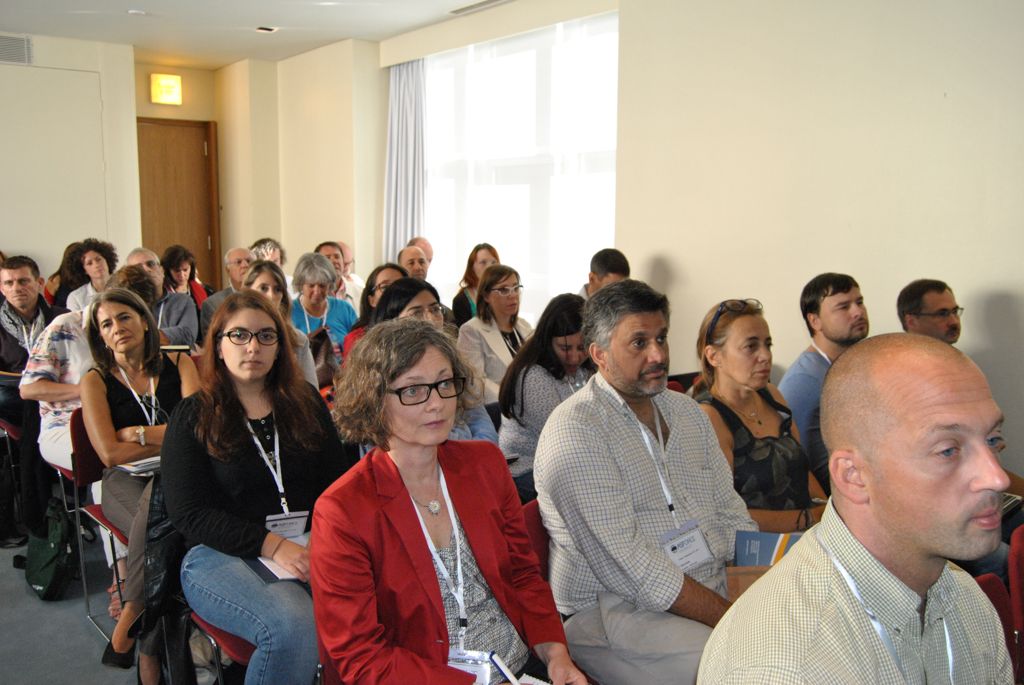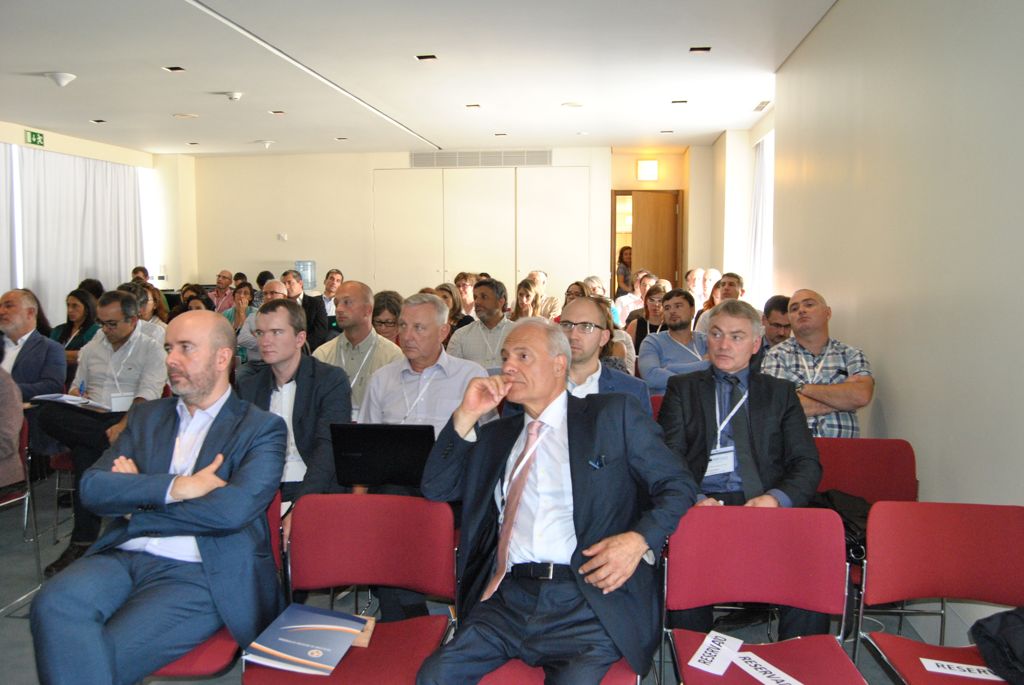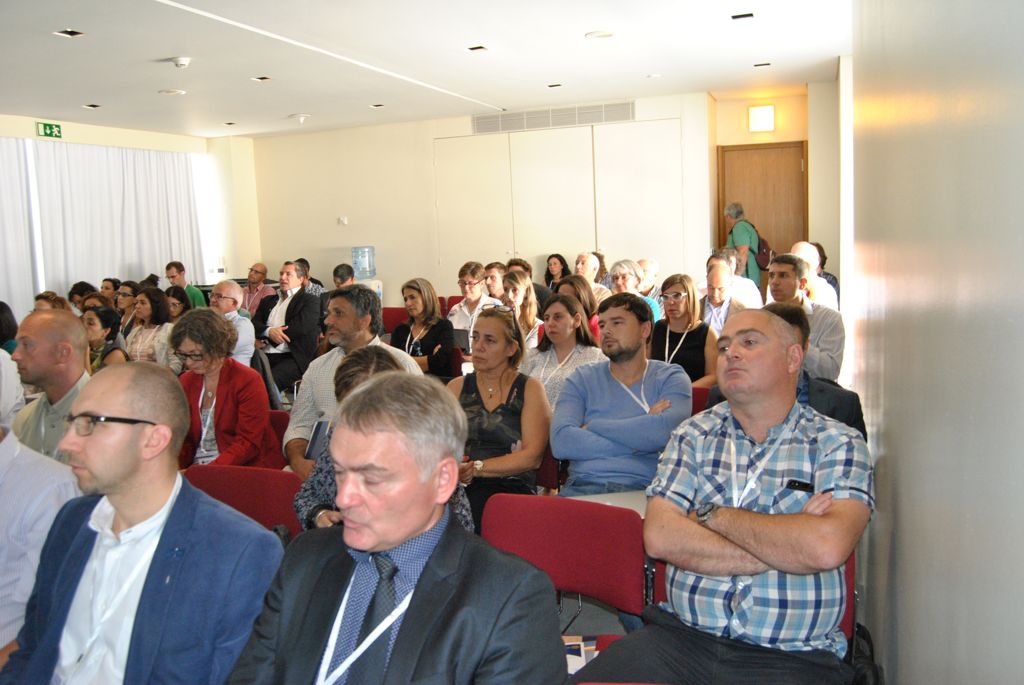The ASFORCE Symposium was organized by FMV-ULisboa (Coordinator Partner) in Lisbon (Portugal), at the “Centro Cultural de Belém”, on September 24th, 2015 (see program below).
The project main outcomes were presented, which was followed by fruitful discussions between some of the ASF world experts, members of the project consortium, and representatives of the veterinary services of several European countries. The program also included key-note presentations by Luis-Vivas Alegre (EC Project Officer), Carlos Martins (FMV-UL, PT), Alberto Laddomada (IZS, Sardinia, Italy) and Juan Lubroth (CVO, FAO)
Ninety delegates participated in the Symposium, including, CVOs or their representatives from Armenia, Belgium, FAO, Finland, Georgia, Latvia, Lithuania, Macedonia, Poland, Portugal, Romania, Serbia and Spain; Representatives from EC- DG, RTD, Brussels and OIE; Representatives of Portuguese Institutions (DGAV,INIAV, Federação Portuguesa de Associações de Suinicultores – Portugal, Sociedade Científica de Suinicultura, Gabinete de Promoção do Programa Quadro de I&D, FMV-ULisboa, and delegates from the eighteen partners of the ASFORCE Consortium
The ASFORCE project aimed at providing:
- i) Essential information to design more cost-effective surveillance and control strategies for ASF in different risk scenarios
- ii) Essential data to identify risk factors for designing new control strategies including wildlife considerations (role of wild boar and argasids)
- iii) Advance work leading to vaccine development through construction of candidate live attenuated or defective non-replicating vaccine strains, and through the identification of protective antigens and their incorporation into vectored virus vaccines. Improve tools for early detection of infection by development of penside diagnostics for virus detection and early antibody detection.
- iv) Preparedness for ASF at different levels through the dissemination of flyers, online courses, and workshops targeting pig farmers, hunters, veterinarians and governmental agencies in EU and ASF affected countries
During the ASFORCE Symposium, consortium members presented achievements on work developed under the different Themes of the project work plan, emphasizing results on relevant topics, covered:
Theme 2 – Prevention, control and eradication models for ASF:
- Characterization of pig production in Europe
- Evaluation of driving forces in pig trade
- Preventing Measures against ASF
- ASF in Europe: risk zones and control strategies
- Molecular characterization of current European ASFV isolates and new genome markers
Conclusions: Guidelines for cost-effective prevention and control of ASF to be disseminated on the ASFORCE website, will detail the most recommended actions to be taken in different risk scenarios.
Theme 3 – Pig-wild boar-argasidae interactions relevant for ASF epidemiology:
Ornithodoros ticks and ASF in Europe
- Animal trials to assess the clinical courses in wild boars
- ASF transmission in wild boars and between wild boars and domestic pigs
- ASF transmission in wild boars
- Risk for disease spread in domestic cycle (Mapping, Biomarkers, Collection of farmers and hunters knowledge, GPS collars (+ camera traps)
- Wild boar – domestic pigs interactions
Conclusions:
- Improvement of knowledge was achieved with regards to the current epidemiological scenarios involving domestic pigs and wild boars.
- Tools were developed to support ASF management, regarding preparedness improvement of strategies for surveillance and control of ASF.
Theme 4 – Development of protection tools against ASF
- Attempts to further attenuate existing isolates OURT88/3, NHP68 by deletion of genes that suppress innate immune responses
- Attenuation of virulent strains (from W. Africa or Trans-Caucasus) by deletion of genes that inhibit innate immune responses (type I interferon)
- Development of disabled infectious single cycle (DISC) ASFV particles as a vaccine strategy
- Identification of potential protective antigens and expression in virus vectors (VLPs and ORFV)
- New tools for early diagnosis LFD for penside virus detection and IgM ELISA for early diagnosis
Conclusions:
- Novel ASFV deletion mutants shown to be attenuated in pigs and induce protective response. Improved safety. Second phase testing completed. Patent applied for. Strategy for attenuation of diverse genotypes
- Novel diagnostic tests for early virus detection were obtained
- Lateral flow devices for penside antigen detection – prototype tested, commercial development planned ELISA for detection of early IgM antigens
- ASFV proteins predicted to be targets for cytolytic T cells identified and expressed in virus vectors
- Tools prepared for defective infectious single cycle (DISC) ASFV vaccine candidates
Theme 5 – ASF training and knowledge transfer
- Approximately 400 veterinarians were trained under ASFORCE workshops , held in Madrid (Spain), Pokrov (Russian Federation), Sofia (Bulgaria) and Cagliari (Italy)
- More than 2000 people visited the online course on ASF
- The FAQ flyer was downloaded over 500 times
- A new disease awareness video was produced and is publicly available for further distribution:
All topics were opened to discussion with participants who contributed with their insights for a better clarification of different issues covered and from whom a good feedback was received regarding the usefulness of the Symposium towards the reinforcement of knowledge and practical issues on ASF prevention and control
The Symposium evolved on a very fruitful and friendly atmosphere culminated on a tour to the historical area of Belém and on an enjoyable social dinner.



















































